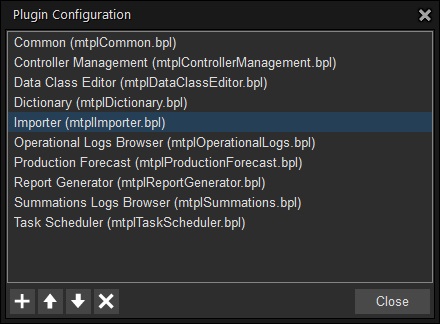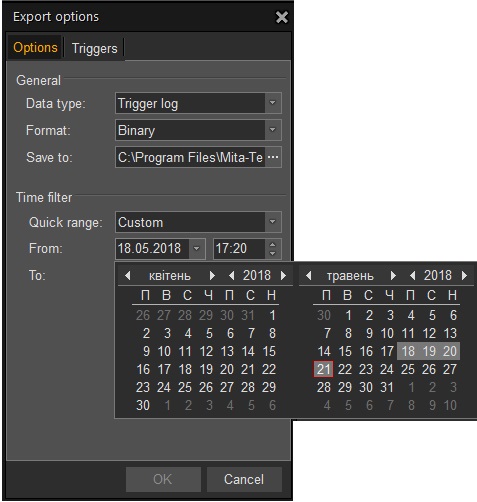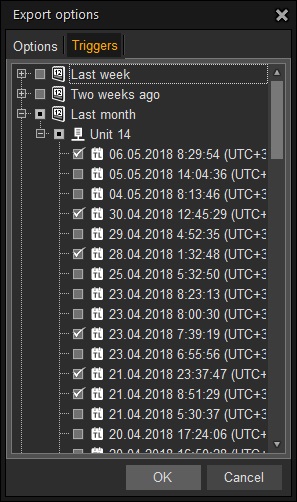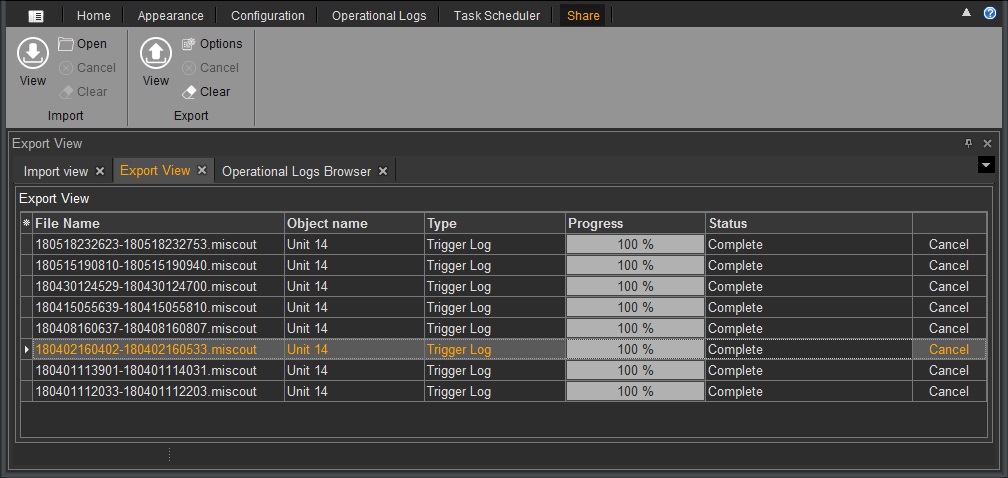

|
Trigger log files either from MiScout SCADA (.miscout files) or Gateway (.gw files) can be imported to MiScout database as well exported to external file folders. A special plug-in Importer (mtplImporter.bpl) has been designed in MiScout SCADA Desk to serve import and export purposes.
Prior to begin import/export operations, first make sure that the appropriate Importer (mtplImporter.bpl) plug-in is listed in the Plugin Configuration dialog. If the required plug-in is available, the Share tab will appear on the main application ribbon. In case the required plug-in is not on the list, a user can easily upload it. For more detail information, refer to Configuring Plug-ins.

As soon as the plug-in is loaded, the Share tab will appear on the main application ribbon with a set of icons and tools for perform import/export operations.

The Import section of the toolbar contains the following icons:
In the Export section can be found a set of icons including:
To perform import of files with trigger log data, take the steps as described below:
1. Press the Open icon accessible in the Import section of the toolbar. Alternatively, double-click within the area of the Import View blank window.
This will open the Select file(s) or folder to import dialog window allowing to browse to the folder location containing files for import.
2. Select desirable files for import and press the Open button in the Select file(s) or folder to import dialog to start importing.
Keep in mind, that MiScout Desk allows to import the following file types:
.miscout files containing trigger log data from MiScout SCADA, while
.gw files contain trigger log data from Gateway.

As soon as files import is finished successfully, the Import View window shows relevant information under the corresponding grid columns including the following:
File Name - shows the file name being imported.
Object Name - shows the name of the target controller.
Type - indicates the type of data being imported.
Progress - shows the progress of importing in percentage values.
Status - indicates the result of import (i.e. Completed, Error, etc.).
Cancel - by clicking this icon next to a specific file a user can cancel its import.
To perform files export with trigger log data, take the steps as described below:
1. Click the View icon accessible in the Export section of the toolbar.
2. Next, press the Options icon. Alternatively, double-click within the area of the Export View blank window.
This will open the Export options dialog window allowing to make necessary settings prior to launching the files export.

The Options tab is split into General and Time filter parts each containing the following configuration property fields:
General
Data type - click an arrow icon to the right of this property-field and select an option from the property-list to define a proper type of data.
Format - click an arrow icon to the right of this property-field and select an appropriate format for exporting data.
Save to - click and browse to the folder location meant for storing exported files.
Time filter
Quick range - select a desirable time period for exporting data including the following options: Last 24 hours, Last 3 days, Last 7 days, Last 30 days.
From - click this property-field to activate the pop-up calendar and specify a desirable date and time for data export starting time.
To - click this property-field to activate the pop-up calendar and specify a desirable date and time for data export end time.

The Triggers tab lists all available triggers as sub-nodes grouped beneath the corresponding time nodes (e.g. Last week, Last month, etc.). On selecting proper check-boxes, a user defines the triggers, which will be exported.
Upon taking all the necessary configuration steps in the Export options dialog, press the OK button to save all configuration changes and launch the exporting procedure.

The result of files export can be viewed in the Export View window in the screen capture above.